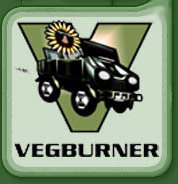Hello,
This is a summary
of all important diagrams and charts of the diploma paper
that can be downloaded at http://www.biocar.de.
Author is Mr. Dipl.Ing. Soyk. There are no further comments
of what is shown here. If you want to know more about the
evaluation of these results, maybe contact Biocar. Biocar
offers a heated dual tank vegoil conversion kit that is
also made for use of solid, used fats. Anything in this
paper assumes a Biocar kit.
Stephan
(sthl@gmx.de)
Diagram 4.6.:

cinematic viscosity of:
blue: diesel
turquoise: sesame oil
green: soybean oil
pink: Mc Donald’s used fat
yellow: take away snack shop
used fat

Above: Density of various oils.
Colours are the same as in
the first diagramm.
Some data on the tested vehicles
and their engines:

Fist Astra is a diesel without turbo, second
Astra is turbocharged and only the last one is a direct
injector. The first two are whirlchamber diesels with a
mechanical Bosch VE injector pump that is controlled by
it‘s inner pressure in the low pressure compartment. The
DI injector pump is an electronically controlled Bosch VE
pump.

Above: This is something on the vegoil conversion.
Charts are as follows:
Date of conversion...
Date and kilometres at the
end of the tests:...
Vegoil consumption (during
the whole test)...
Diesel/RME consumption (~)...
Ways: 7km to work and many
longer A road and city drives ; mainly motorway ; only 38km
to work daily.

The first chart above shows the developement
of power of the Opel Astra 1,7d, kilometre reading: 100.000km
with fresh soybeanoil. The second charts shows the developement
of black smoke value both related to speeds between 50 and
140 km/h.
The next charts show single
exhaust gas emissions which had been taken according to
EC emission test 70/220/EWG Type I.

Picture 5.8 above shows details of the EC
emission test cycle. The only difference was that there
was no cold start of the engine as the concept of this dual
tank conversion is based on cold starts with mineral diesel
which was unimportant here.
The next diagramm shows a
comparison of the engine performance (KW) with the same
alternative fuels: soybeanoil, sesamoil, McDonald’s WVO,
snack shop WVO, mineral diesel.

6.2.: Next one is a diagramm about the efficiency
of these fuels:

Diagram 6.3.: comparison
of black smoke values

6.4.: HC emissions:

6.5.: NOx in g/km:

6.6.: Co emission:

6.7.: Fuel consumption:

6.8.: comparison of HC emissions
of soybeanoil at different temperatures:

6.9.: The same with NOx values:

6.10.: CO emissions at different temperatures-
still of soybeanoil:

6.11.: Influence of temperature on fuel consumption
of soybeanoil:

6.12: comparison of all 4 values with diesel
before and after the vegoil tests:

6.14.: comparison of power- again before and
after the tests:




